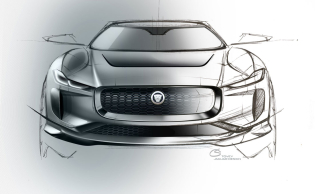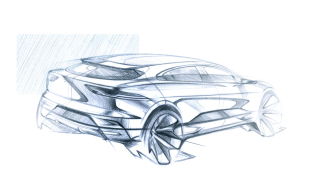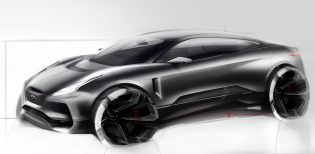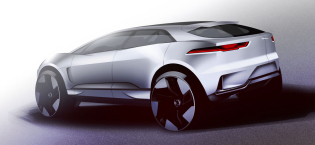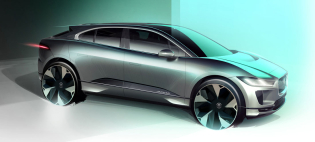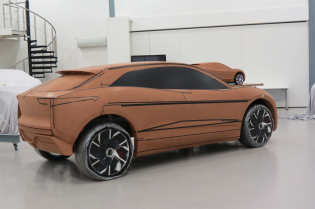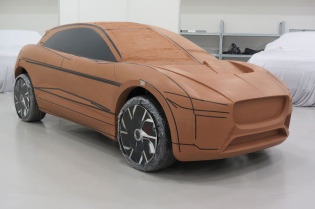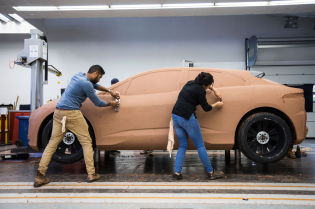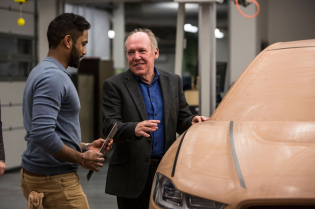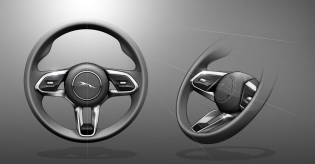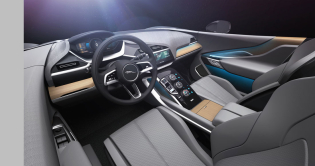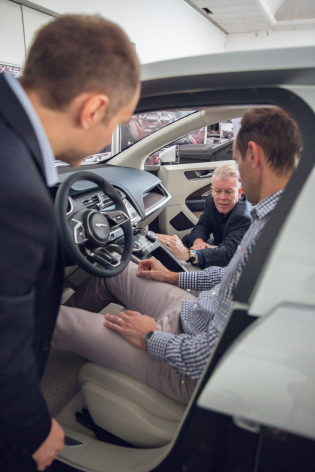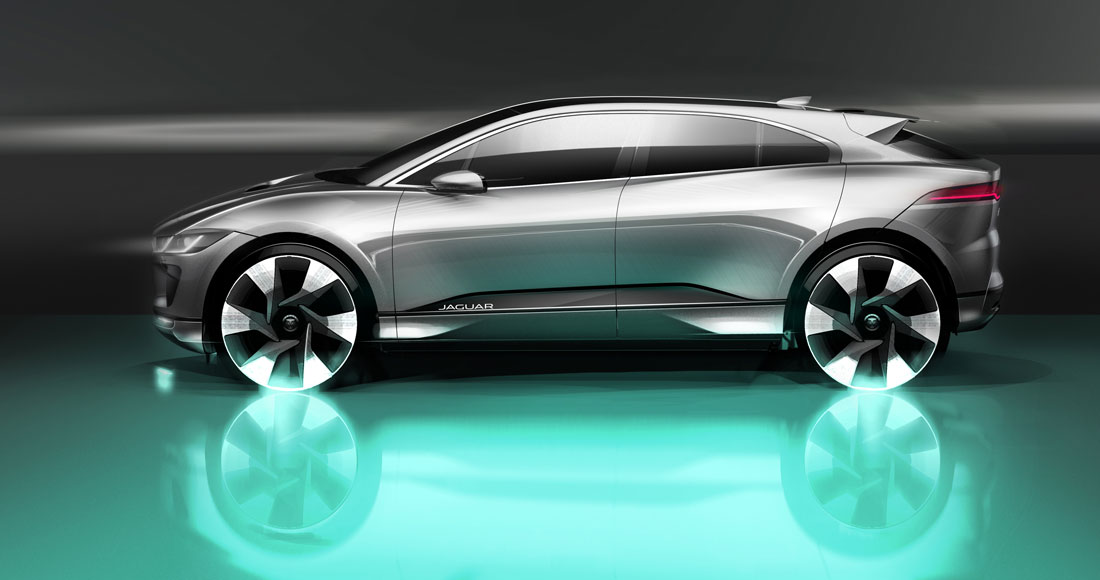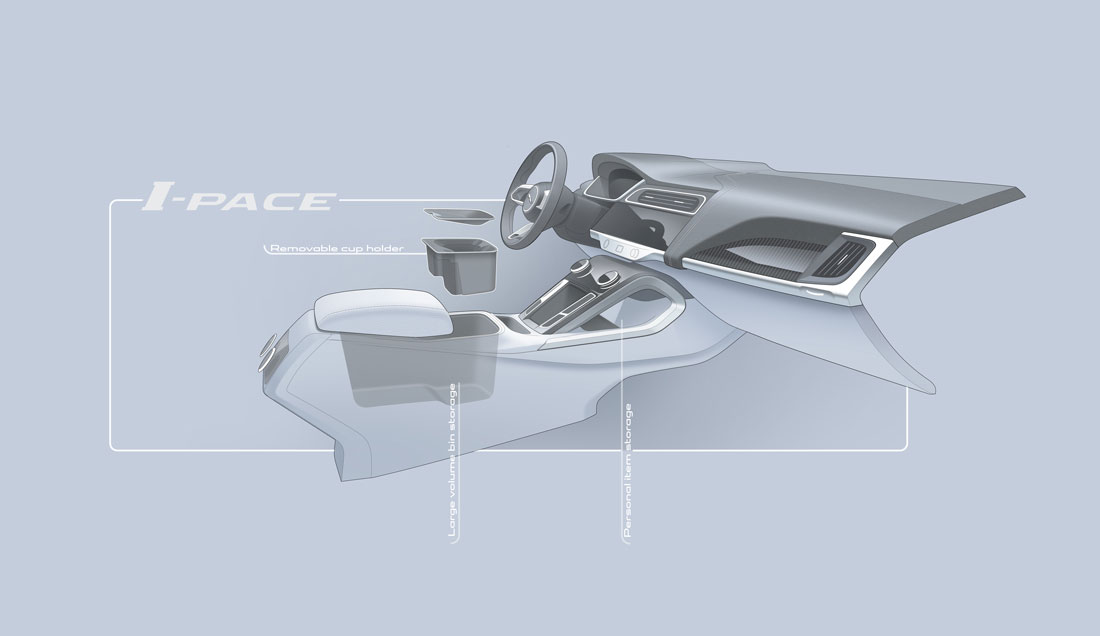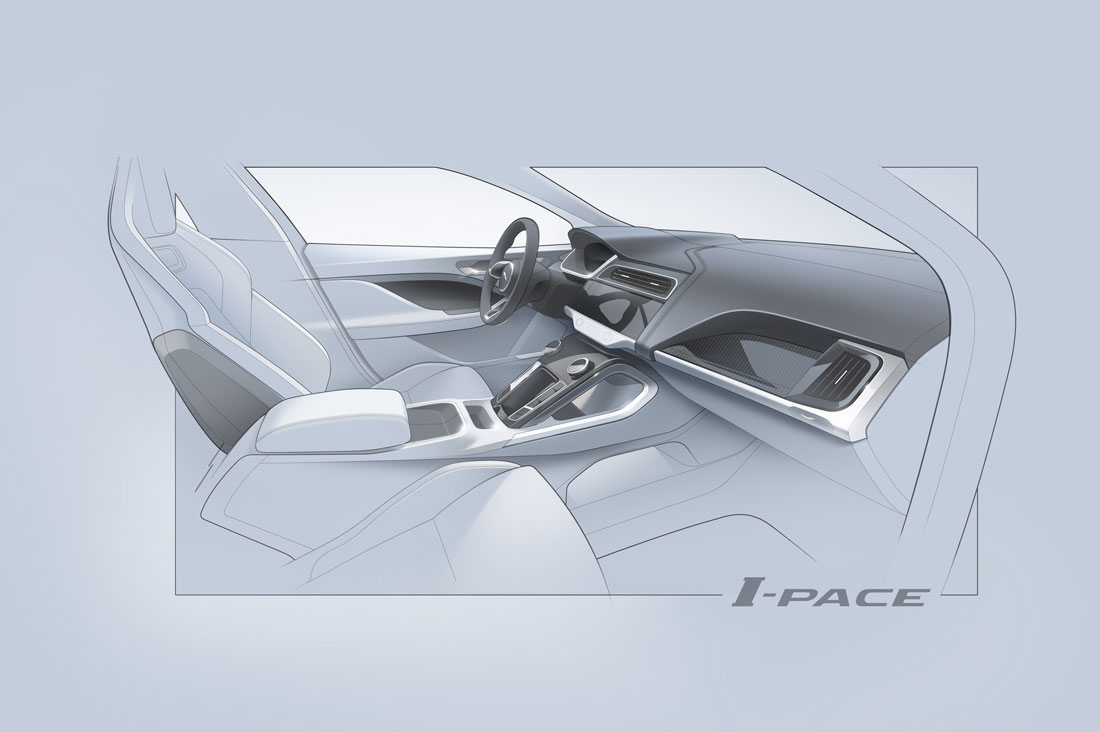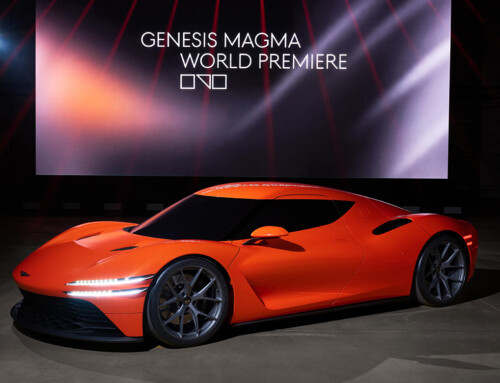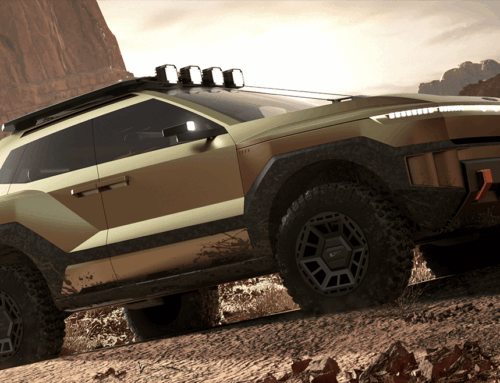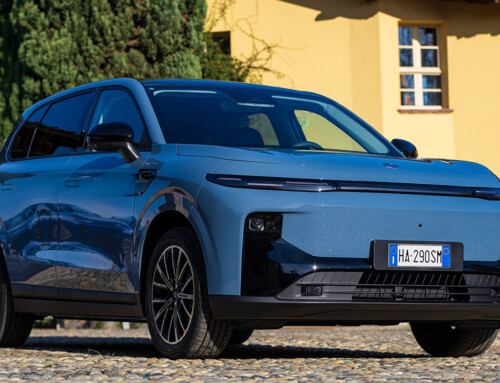A new design language? “No,” says Ian Callum: “The language remains typically Jaguar. It’s the proportions that have changed. The graphics have a familiar look about them, because we want the user to recognise it as a Jaguar, but you just have to look at the I-Pace on the road and you realise it is something completely different”. In a nutshell, the Jaguar design chief explains the crucial turning point of the British brand, which by presenting this relatively compact Suv in Geneva has launched itself into the world of electric cars. This is just the beginning, because according to Callum the I-Pace represents the template for other Jaguars to come, an entire electrical family that will be able to exploit the same mechanical structure.
We decided, explains Callum, that it was possible, in a car with an electric motor on the front axle and one on the rear, to shorten the nose dramatically because there was no reason to have a long bonnet. But I didn’t want the I-Pace to become a mere hatchback. The design had to reflect the reality of the new mechanicals, so we pushed the weight forward, as if it were a mid-engine car”.
It is a type of solution that has intrigued Callum since Ferrari launched the 250 Le Mans in the 1960s and that has two precedents in Jaguar: the 1966 XJ13 racing prototype and the C-X75 hybrid concept presented in Paris in 2010, which has lent the I-Pace a number of specific references, such as the big front mudguards, the bold curves, the muscular sides and the extraordinary belt line. “By pushing the visual weight forward, the inevitable has merged with the desirable, with the birth of a “cab forward” physiognomy, with the entire structure sinking into the A-pillars; it is a natural progression for Jaguar’s styling language.
Looking at the finished result it is easy to say how much Jaguar there is in this electric car as it delivers 200 horsepower per motor, reaches 100 kph in 4.8 seconds, has a top speed of 200 kph and a range of 480 km. Jaguar’s stylistic cues help: the grille, the lines “sculpted and in harmony with each other”, but above all, Callum observes, “with a precise direction, a beginning and an end, not like certain cars where it is hard to understand where the lines end”.
But he admits that for him it was a difficult “learning curve”. “I had to learn”, he says, “a new type of mechanical structure, how batteries operate, cooling needs and the relative air volumes. I can do a sketch for an internal combustion car almost with my eyes closed. But this was all new to me. It’s an important moment: I’m convinced that cars will change more over the next 15 years than they have in the last 100”.
The interiors, developed by Alister Whelan’s team, were able to take advantage of the new architecture that, with the batteries located low down, eliminates the centre tunnel. The attention to detail, functionality, the advanced Touch Pro Duo infotainment system, combine in control cabin style with the flowing console. “The interiors”, says Callum, “have a great emotional impact, able to excite the senses: the driver is the absolute protagonist and the passengers have all the space they need. Travelling in the I-Pace means experiencing something special. And that’s what a Jaguar must offer”.
Full article in Auto&Design no. 230
